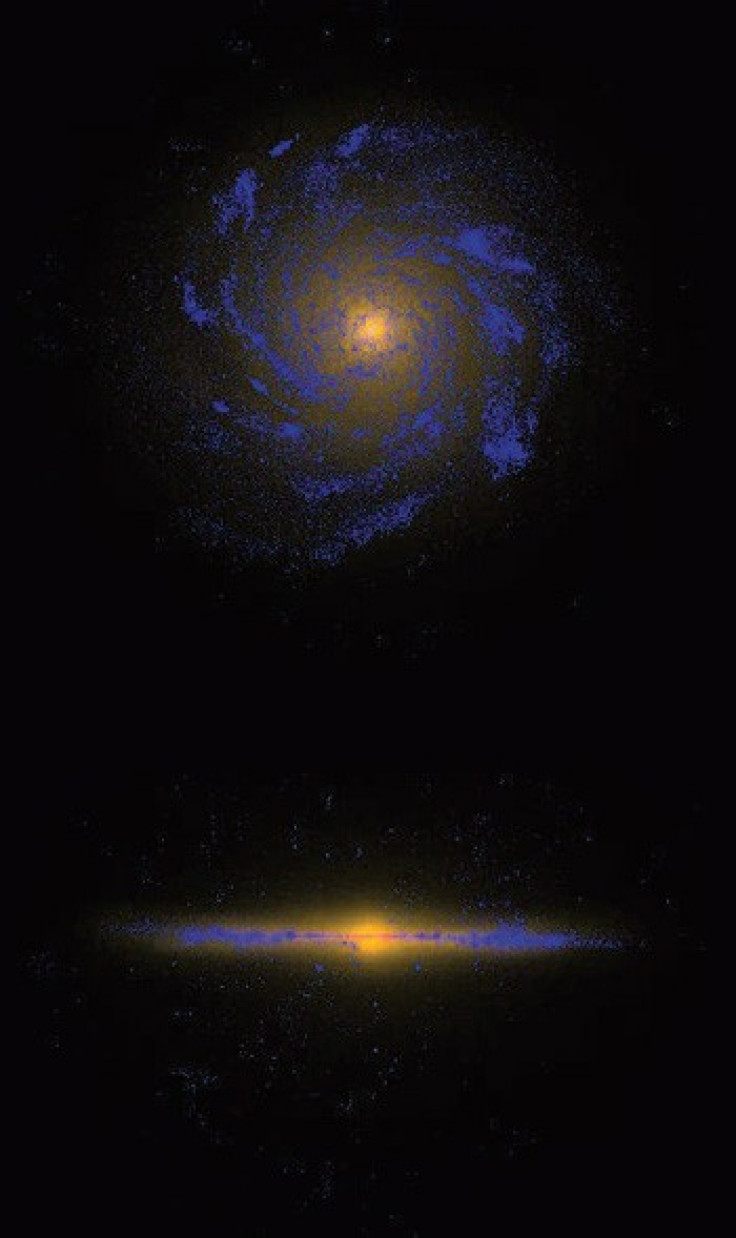Supercomputers Allow First Detailed Milky Way Simulation [VIDEO]

After months of number crunching on powerful supercomputers, researchers at the University of California, Santa Cruz and the Institute for Theoretical Physics in Zurich have come up with a beautiful computer simulation of the physics involved in the formation of the Milky Way.
While it may at first bring to mind images you've seen on your iTunes Visualizer - and it is set to futuristic electronic music - the project took the group nearly eight months to create at the Swiss National Supercomputing Centre in Manno, Switzerland. The group claims it would have taken 570 years to build the simulation on a personal computer.
The simulation, called Eris, solves a long-standing problem that led some to question the prevailing cosmological model of our universe.
Previous efforts to form a massive disk galaxy like the Milky Way had failed, because the simulated galaxies ended up with huge central bulges compared to the size of the disk, Javiera Guedes, who authored the study, said in a news release.
The Eris galaxy is a large spiral galaxy with a central bar of bright stars and other structural properties consistent with galaxies like our own: the Milky Way. The brightness profile, bulge-to-disk ratio, and stellar content of Eris are also all within the range of observations of the Milky Way.
For 20 years, astronomers have tried to come up with a simulated galaxy to replicate the look of the Milky Way and other spiral galaxies. Guedes and her colleagues were more successful primarily because of the equipment they had at their disposal: 1.4 million processor-hours on NASA's state-of-the-art Pleiades supercomputer, plus additional supporting simulations on supercomputers at UCSC and the Swiss National Supercomputing Center.
We took some risk spending a huge amount of supercomputer time to simulate a single galaxy with extra-high resolution, co-author and UC-Santa Cruz astronomer Piero Madau said in the release.
The team used a software platform called Gasoline to trace the motions of over 60 million particles, representing galactic gas as well as dark matter, over the course of over 13 billion years.
Star formation in real galaxies occurs in a clustered fashion, and to reproduce that out of a cosmological simulation is hard, Madau said. This is the first simulation that is able to resolve the high-density clouds of gas where star formation occurs, and the result is a Milky Way-type of galaxy with a small bulge and a big disk.
The simulation uses the leading theory that slow-moving or cold particles of dark matter clumped together in the early universe, forming the scaffolding around which galaxies and clusters of galaxies then took shape.
The Eris galaxy simulation shows that the cold dark matter scenario, where dark matter provides the scaffolding for galaxy formation, is able to generate realistic disk-dominated galaxies, Madau said.
While the research may be a breakthrough for supercomputing, Eris is still way off from the real-life Milky Way. Even though Eris is a phenomenal high-resolution simulation, its 60 million particles of gas and dark matter cannot compare with the Milky Way's hundreds of billions of stars.
The study is to be published in the Astrophysical Journal.
Watch the simulation below:
© Copyright IBTimes 2024. All rights reserved.












